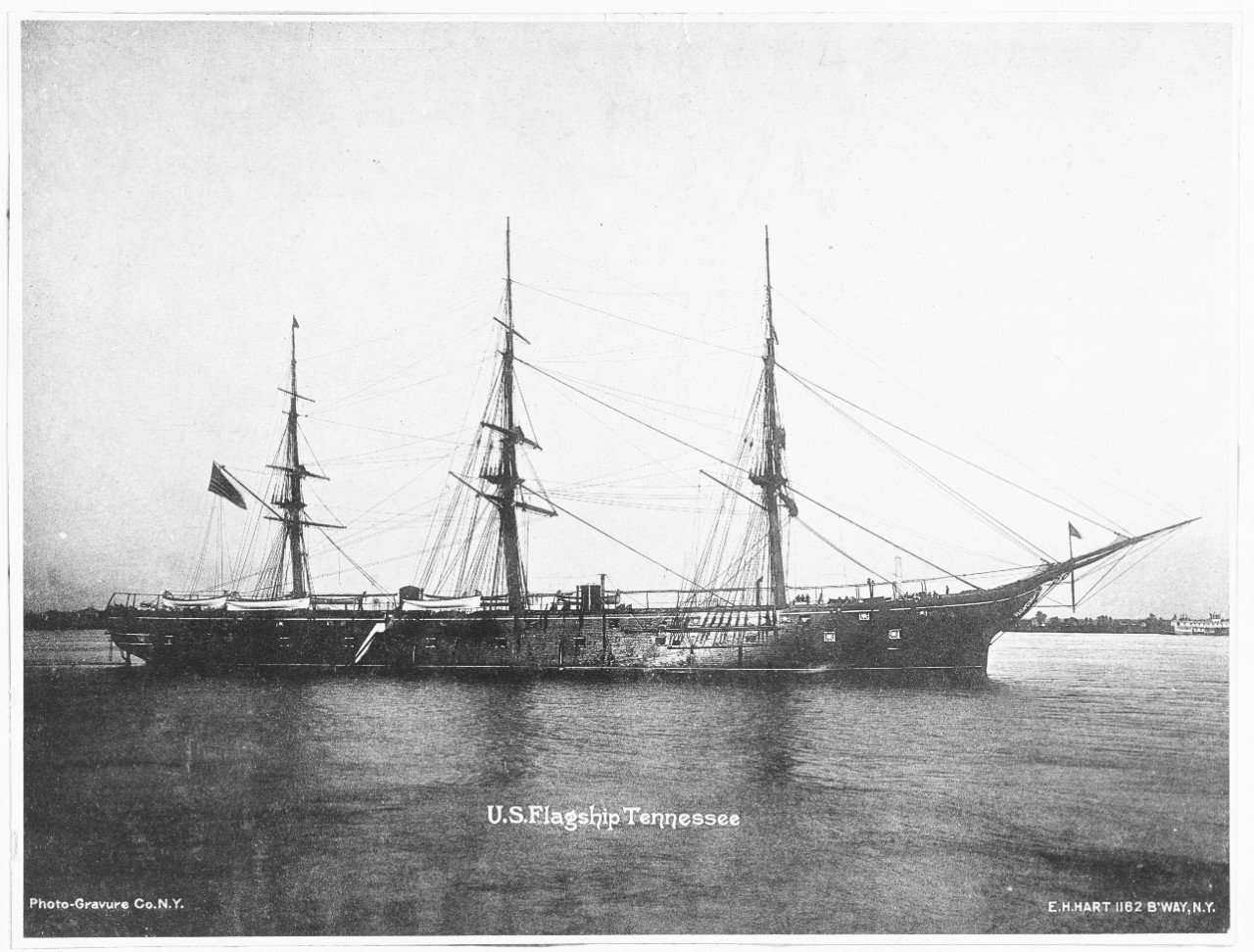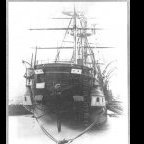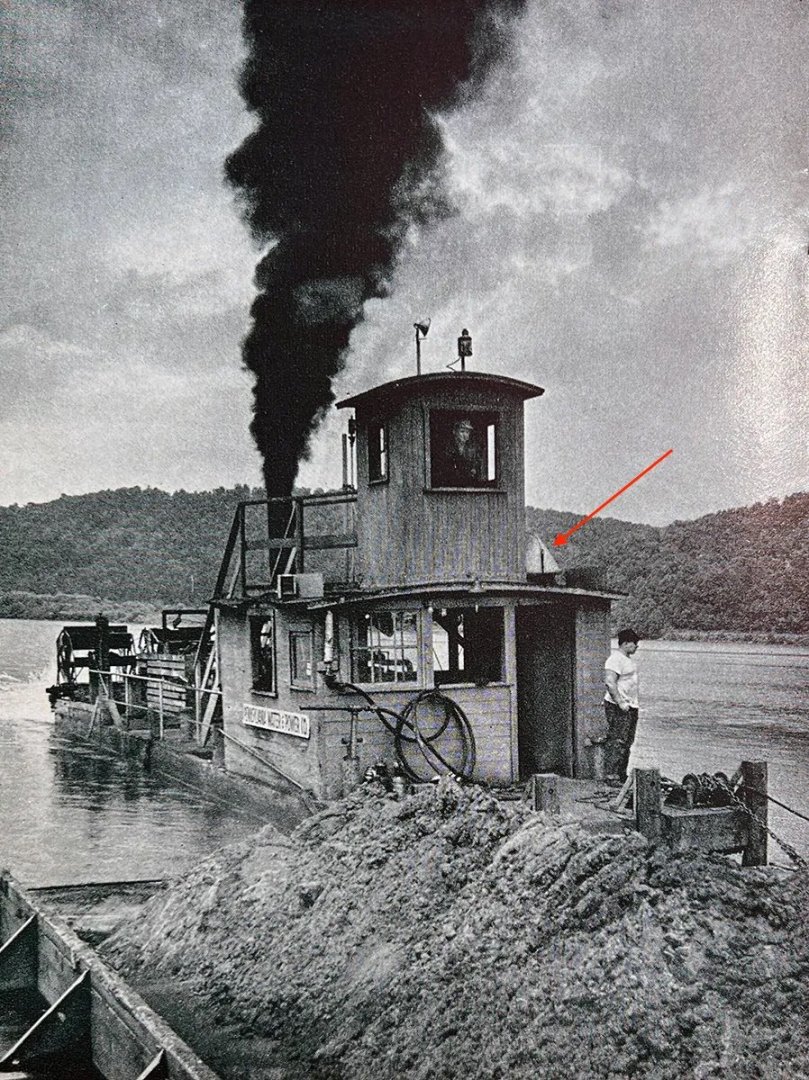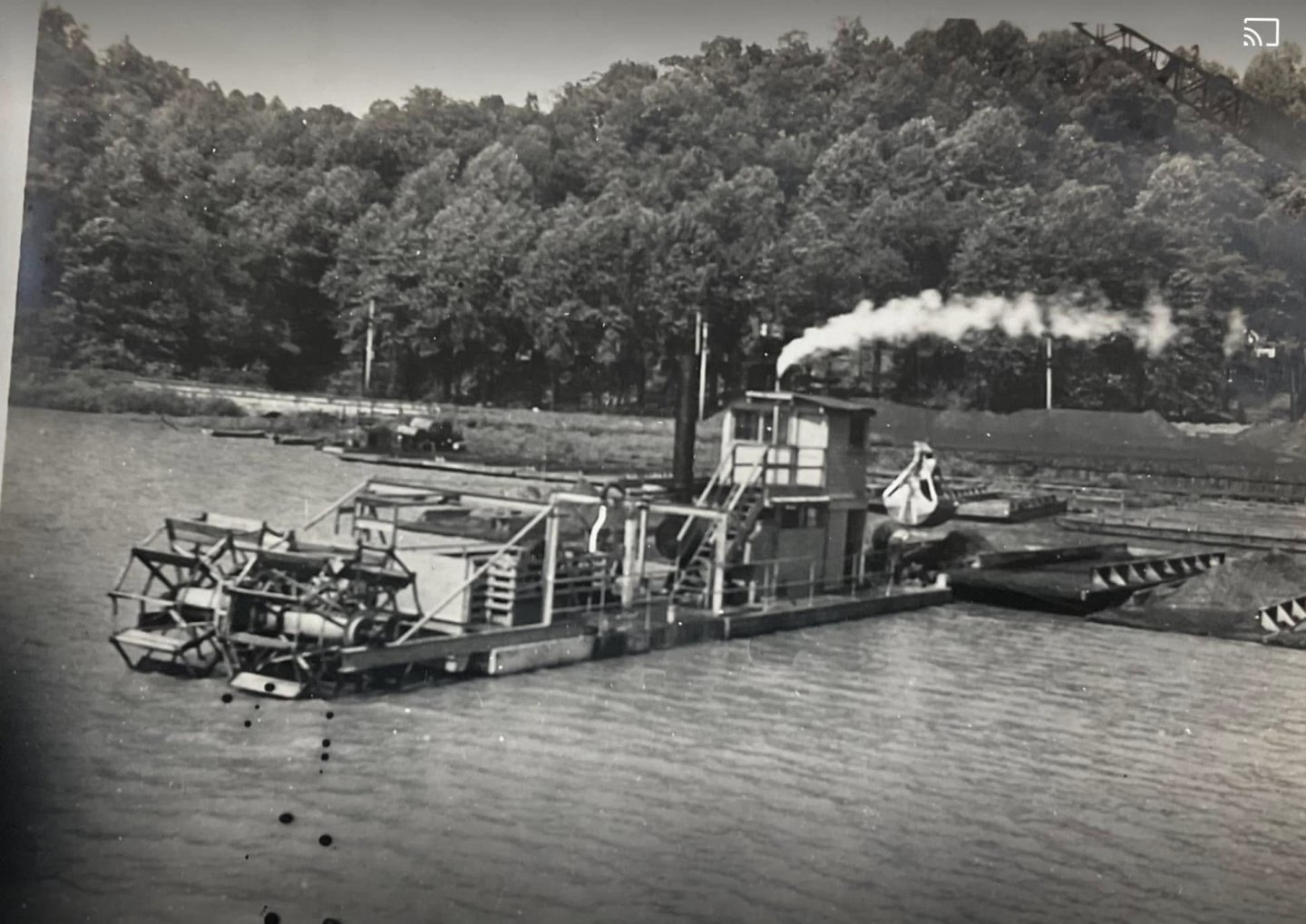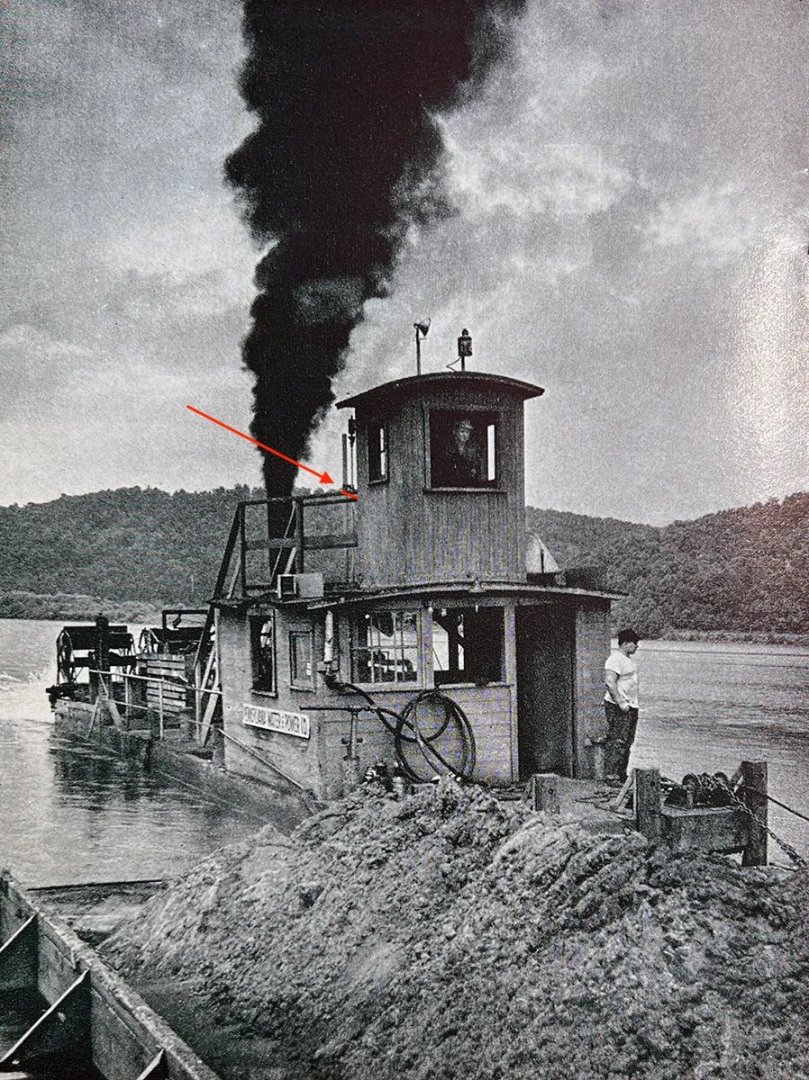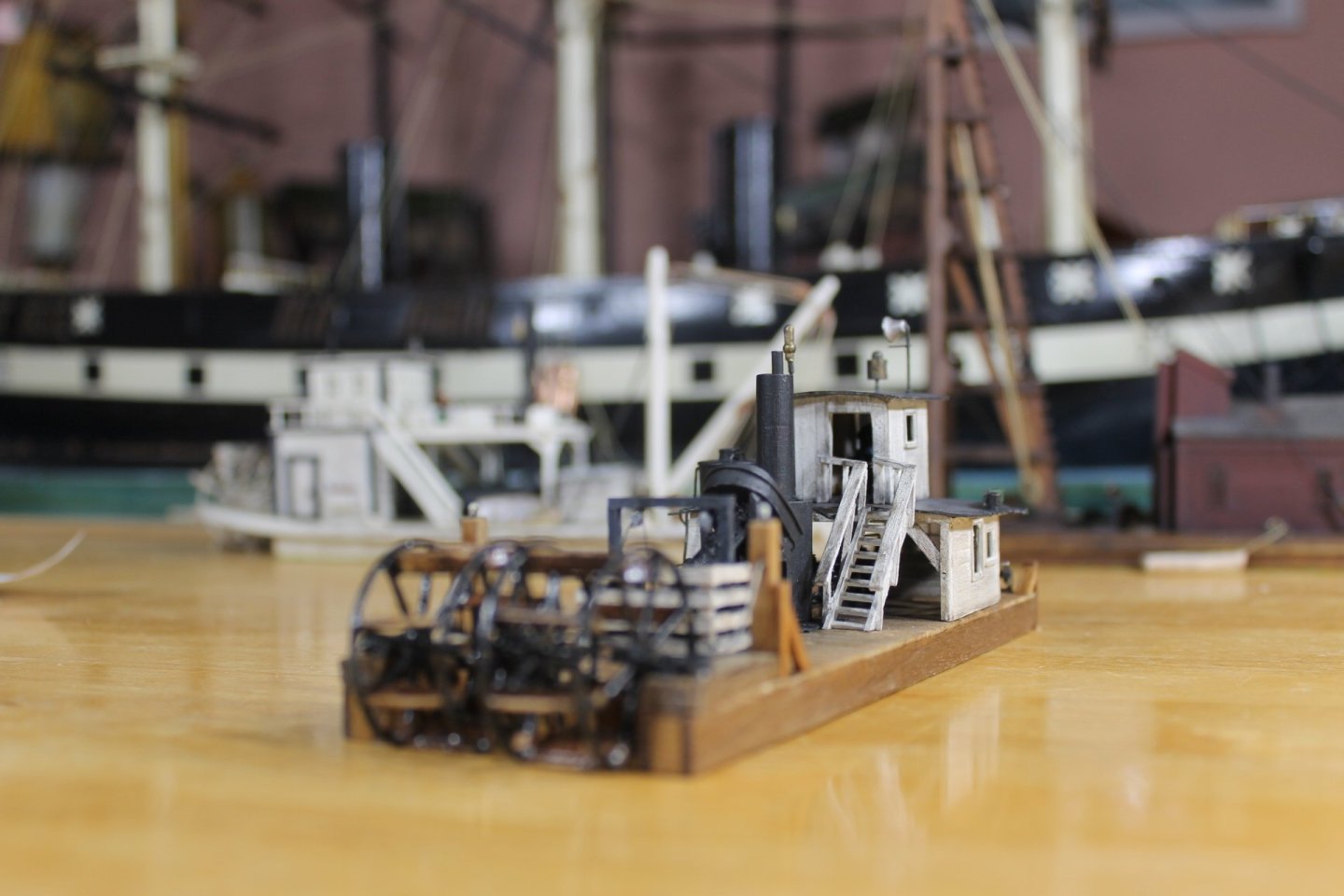-
Posts
6,607 -
Joined
-
Last visited
Content Type
Profiles
Forums
Gallery
Events
Everything posted by Keith Black
-
Susquehanna sausage on the barbie. Yea, that's the ticket. It's a bloomin' mystery, John. Craig, there's only five feet from the water tank to the point where you see whatever it is. Not even close to the room needed for even a small skiff. I think it's a poly tank designed to go into the hull of a ship or boat. For whatever reason the tank wan't used for it's original intent (deal feel through?) and this ugly duck bought it because they needed a tank and could have cared less what it looked like, they just needed a light weight tank. They were able to get a deal on the tank and adapted it to their need by flipping it upside down and making it work. That's my story and I'm stickin' to it.
- 457 replies
-
- sternwheeler
- Hard Coal Navy
-
(and 1 more)
Tagged with:
-
Thank you for your input, Eric. I value your thoughts including "Presumably they didn't have a restaurant-grade commercial fryer in there." LOL, that's funny I don't care who you are. Keith, It does kinda look like a barn there on the shoreline..............you been standing too close to the tracks again haven't you?
- 457 replies
-
- sternwheeler
- Hard Coal Navy
-
(and 1 more)
Tagged with:
-
While we're on the subject of leaving things off....... I can't confidently determine what this is. At the start of this build, Eric (Cathead) thought it was a ship's boat/skiff. I don't think that's what it is for two reasons. 1) If one enlarges the below photo till it pixelates one sees something like what I've drawn. The black object I took to be the water tank and it made sense for it to be there because that would have been adjacent to a pump. 2) if in fact the black object is a water tank, once added there's insufficient room for a ship's boat/skiff. I think what we're seeing (the white object) is a poly tank added when the water pump was upgraded requiring additional tank capacity. Poly tanks didn't come about till the 1960's. These photos could have easily been taken in the 60's not 50's as I had originally thought. Whatever it is I'm leaving it off due to uncertainty and making the push boat as it would have been before a possible water pump upgrade. The below is a more modern, larger, and better designed Susquehanna towboat and for the life of me, I don't see a ship's boat/skiff. In the limited number of Hard Coal Navy photos I don't see a ship's boat/skiff on any of the vessels.
- 457 replies
-
- sternwheeler
- Hard Coal Navy
-
(and 1 more)
Tagged with:
-
Thank you so much, Brian. You're correct about the footprint and the space required to display them. I could (hopefully) build several of these at this scale and only need a couple of book shelves to display them. Thank you again, Kurt for keeping me honest. In my #303 post I was laughing at myself because I was trying to skate on making the brace thinking, will anyone really notice? And sure enough, I was caught red handed and I find it a laughable (at me) situation. As far as the pilot house attachment point.....1) It could work out where I'm only able the brace between the exhaust stack and the steam whistle line. 2) If I am able to attach to the pilot house it's probably going to be a arbitrary point. I'm not too worried about the height as that attachment point would be on the port side of the railing and resins for crew access to that side of the railing would have been minimal. Thank you very much, Roel. The brace doesn't really add to the maze that much, truth be told, I was simply being lazy.
- 457 replies
-
- sternwheeler
- Hard Coal Navy
-
(and 1 more)
Tagged with:
-
Sorry, Phil, I forgot about you.
-
Speaking of steam whistle line brace.... This photo shows the brace. The angle suggest (to me at least) that the brace carries past the steam line and anchors into the pilot house wall. Do my colleagues agree? Something like this? You guys realize this is going to cause project delays and cost overruns.
- 457 replies
-
- sternwheeler
- Hard Coal Navy
-
(and 1 more)
Tagged with:
-
Chris Coyle @ccoylewould be the one to ask.
-
Thank you, Paul. I'm taking a couple of days to do exactly that. Thank you, Glen. Thank you, Ken. Thank you, Kurt. You be one sharp eyed fella. I missed my chance for the brace of choice when I got ahead of myself and glued the whistle on before I slipped one of my tiny PE eye pins down the wire (24 GA) first. I was hoping to maybe get away with not having the brace but now that you've pointed it out to the whole world 🤣, I guess I need to figure out something because it does need to be braced to the exhaust stack...........cain't get away wid nuttin' round here. Thank you, Keith
- 457 replies
-
- sternwheeler
- Hard Coal Navy
-
(and 1 more)
Tagged with:
-
Thank you to each of you for your support with the likes and your kind comments. We reached a milestone today, the engine room is attached! It seems like this has been a long time coming. I finally got the bow work light (lightbulb) made and attached to top center of the front windows. I want to attach the deckhand so bad but I know if I do while there's still work to do I'm gonna pull a Bob (Knocklouder) and snap him right off! I haven't posted this view in awhile. It was neat to have the engine room attached as I could finally hold, twist, and turn to view through the windows and doors with out the engine room falling to the floor. All the water, exhaust, and steam lines have been added and attached, it's quite the maze but NOTHING like Roel's masterpiece. The end is in sight for the push boat part of this build. I figure I've got about two weeks left if I don't dawdle about enjoying the moment. All that's left is the railing, chintzy hog chain support system, final weathering, poly wet down, and deckhand. Thank you for being part of the journey. Keith
- 457 replies
-
- sternwheeler
- Hard Coal Navy
-
(and 1 more)
Tagged with:
-
Thank you, Eric. I lived in Roslyn not once but twice. Once as a small child until we moved back to Texas in 1953 and then when I moved my then wife and son to Roslyn in 1976. Of course the mines were long gone when I moved back in 76 but a lot of the old mining town flavor still existed. Thank you for commenting, Tony. You need to start a Mosquito Fleet sternwheeler build, I would love the opportunity to look over your shoulders.
-
A dolphin skewer! The Queen Ann looks really sharp, Glen. 👍
- 156 replies
-
- Queen Annes Revenge
- bottle
-
(and 1 more)
Tagged with:
-
Roland, welcome to MSW. Glad to have you aboard.
-
Matt, welcome to MSW. Glad to have you aboard.
-
Eric, for those of us that use photographs to make models after viewing those photos for hundreds if not thousands of times we're able to spot the most insignificant detail. I think that's the case with the Peerless. You're able to see things that it takes me several viewings before I'm finally able see what you so easily saw. Having said that, in all the photos of Peerless, to me, she always looks like the Peerless. As far as the Wikipedia photo and the Saltwater People supposed photo of the Zephyr, I don't get that sense of them being the same vessel. Now, there's no doubt that the Wikipedia photo and the Washington Rural Heritage photo are both of the Zephyr regardless of the major differences/changes made between the two. I value your two cents worth greatly.
-
Never worry about being off topic around here, John. I've heard the dog's meal thing both ways, breakfast or lunch. Being the lazy person I am, I use dog's lunch as it's easier to say and type.
- 457 replies
-
- sternwheeler
- Hard Coal Navy
-
(and 1 more)
Tagged with:
-
Glen, I was indeed flattered by Roel's comment but I'd make a dog's lunch out of a tanker plus go mental in the process. Thank you again for your comment, John.
- 457 replies
-
- sternwheeler
- Hard Coal Navy
-
(and 1 more)
Tagged with:
About us
Modelshipworld - Advancing Ship Modeling through Research
SSL Secured
Your security is important for us so this Website is SSL-Secured
NRG Mailing Address
Nautical Research Guild
237 South Lincoln Street
Westmont IL, 60559-1917
Model Ship World ® and the MSW logo are Registered Trademarks, and belong to the Nautical Research Guild (United States Patent and Trademark Office: No. 6,929,264 & No. 6,929,274, registered Dec. 20, 2022)
Helpful Links
About the NRG
If you enjoy building ship models that are historically accurate as well as beautiful, then The Nautical Research Guild (NRG) is just right for you.
The Guild is a non-profit educational organization whose mission is to “Advance Ship Modeling Through Research”. We provide support to our members in their efforts to raise the quality of their model ships.
The Nautical Research Guild has published our world-renowned quarterly magazine, The Nautical Research Journal, since 1955. The pages of the Journal are full of articles by accomplished ship modelers who show you how they create those exquisite details on their models, and by maritime historians who show you the correct details to build. The Journal is available in both print and digital editions. Go to the NRG web site (www.thenrg.org) to download a complimentary digital copy of the Journal. The NRG also publishes plan sets, books and compilations of back issues of the Journal and the former Ships in Scale and Model Ship Builder magazines.

